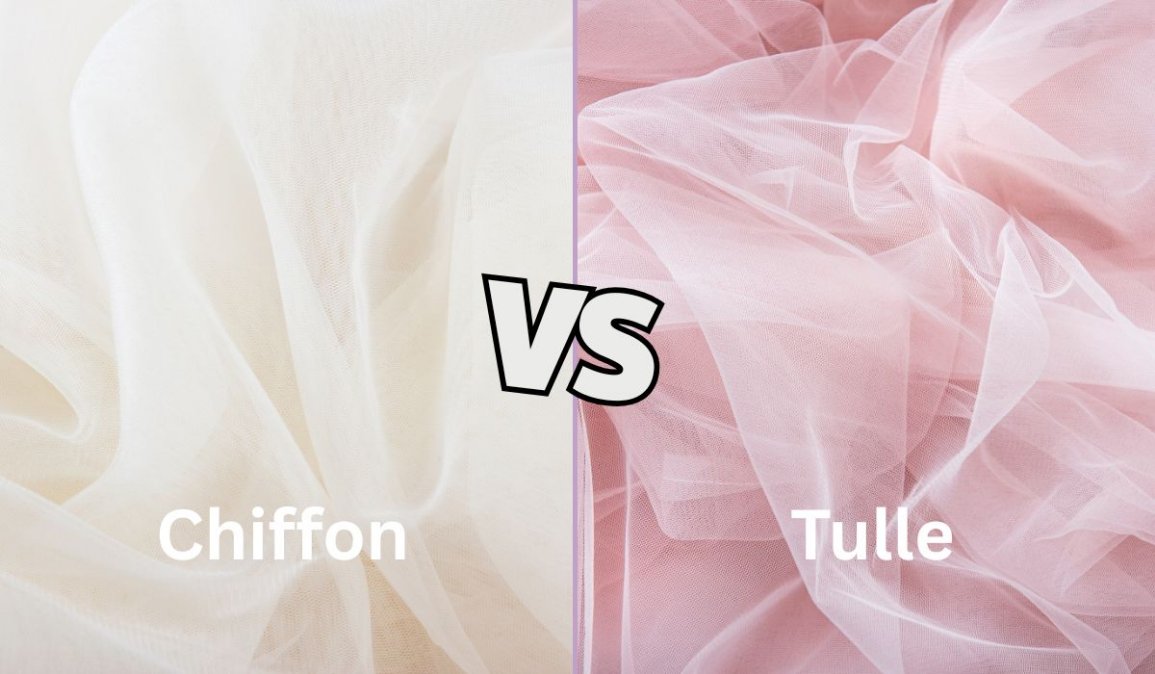Ethereal Fabrics for Magical Moments: Choosing Between Structure and Flow
Making the right fabric choice for children’s clothing can be tricky, especially when dealing with delicate materials like tulle and chiffon. I’ve worked with both fabrics extensively in creating special occasion wear for kids. Tulle offers more structure and maintains fullness in skirts and dresses, while chiffon provides a softer, flowing appearance that drapes beautifully against the body.
Tulle is typically stiffer and works brilliantly for creating voluminous tutus and party dresses that hold their shape. I’ve found that chiffon’s fluid nature makes it perfect for lightweight summer dresses and special occasion wear where comfort is essential.
On This Page
Key Takeaways
- Tulle maintains shape and structure in children’s clothing, making it ideal for tutus and full skirts
- Chiffon offers superior draping qualities and comfort for delicate children’s garments
- Both fabrics require special care and proper lining to ensure durability and comfort against sensitive skin
Understanding Tulle Fabric
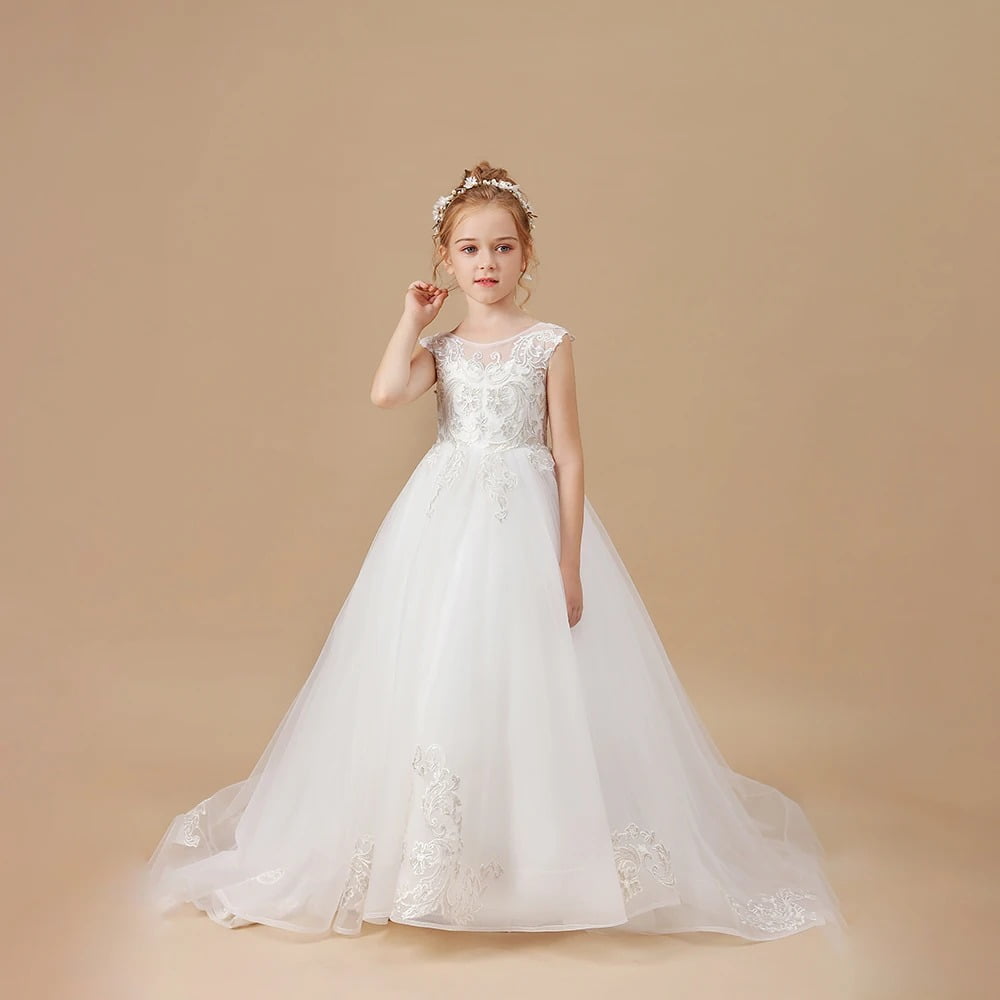
Tulle fabric is a lightweight, structured mesh material with distinct hexagonal holes that give it its signature appearance and durability. I find it’s essential to know its unique properties to make informed choices for children’s clothing.
Characteristics of Tulle
Tulle offers surprising strength despite its delicate appearance, thanks to its special hexagonal construction. This unique weave prevents twisting and helps maintain its shape.
I’ve noticed tulle has a more rigid structure compared to other sheer fabrics. It creates a flouncy effect when layered and maintains its form beautifully.
The fabric’s net-like texture makes it:
- Lightweight and airy
- Semi-transparent
- Crisp and structured
- Resistant to wrinkling
- Easy to layer
Types of Tulle
The most common varieties I work with include:
By Material:
- Cotton tulle
- Silk tulle (finest quality)
- Nylon tulle (most durable)
- Polyester tulle (budget-friendly)
By Stiffness:
- Soft tulle (for veils)
- Medium tulle (for skirts)
- Stiff tulle (for structured pieces)
Uses of Tulle in Children’s Clothing
I regularly see tulle used in special occasion wear for children. It’s particularly popular in party dresses and dance costumes.
Common applications include:
- Ballet tutus
- Party dress overlays
- Petticoats
- Hair accessories
- Fancy dress costumes
For dance wear, I recommend multiple layers of tulle to create volume. A typical tutu’s structure comes from layering this fabric strategically.
Tulle works brilliantly for special events because it adds drama without weight. I find it especially suitable for summer celebrations when children need breathable yet fancy clothing.
Exploring Chiffon Material
Chiffon fabric brings elegance and grace to children’s clothing through its light, airy texture and flowing movement. This sheer, delicate material adapts beautifully to both casual and formal children’s wear.
Attributes of Chiffon
Chiffon has a distinctly soft and lightweight feel that makes it perfect for layered garments. The fabric’s weave creates a slightly crinkled surface that catches light beautifully.
I’ve found that chiffon drapes exceptionally well, creating gentle folds and movement that suit dancing dresses and party frocks.
The translucent nature of chiffon means it often needs a lining or underlayer for children’s clothing. This creates wonderful opportunities for colour combinations and layered effects.
Varieties of Chiffon
Modern chiffon comes in three main types:
- Silk chiffon: The most luxurious and expensive option
- Polyester chiffon: Durable and budget-friendly
- Rayon chiffon: Offers excellent drape at a moderate price
The fabric takes dye beautifully, allowing for vibrant colours and patterns that appeal to children and parents alike.
Chiffon in Kids’ Attire
I recommend chiffon for special occasion dresses and summer party wear. The fabric works brilliantly for:
- Party dresses with twirling skirts
- Light summer scarves
- Special event overlays
- Dance costumes
Young children find chiffon comfortable in warm weather due to its breathability. The fabric’s movement adds a magical quality to party dresses and formal wear.
For everyday durability, I suggest polyester chiffon as it withstands regular washing while maintaining its appearance.
Comparative Analysis: Tulle Versus Chiffon
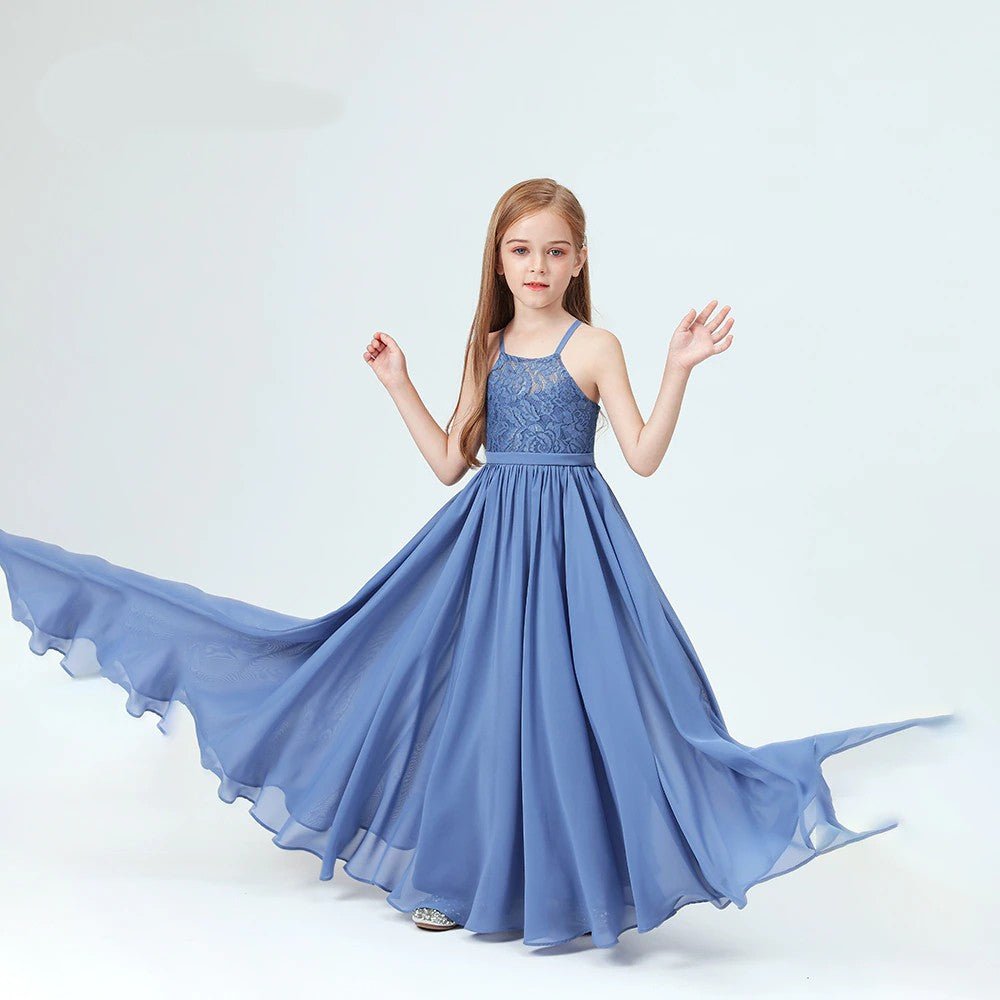
Tulle and chiffon stand apart in their unique characteristics that affect how they function in children’s clothing. Both fabrics offer distinct advantages when crafting special occasion wear and everyday garments for young ones.
Texture and Feel
Chiffon drapes more smoothly against the skin with its soft, flowing nature. I find it particularly gentle for children’s sensitive skin. The fabric moves gracefully with every step.
Tulle has a stiffer texture and maintains its shape well. I’ve noticed it creates more volume and structure in garments, which is perfect for fuller skirts and special occasion dresses.
The breathability between these fabrics differs significantly. Chiffon allows better air circulation, making it more comfortable for extended wear. Tulle tends to trap heat more readily.
Durability and Care
I’ve found that chiffon requires more careful handling during washing. It’s best to hand wash or use a gentle cycle in cold water to prevent snags and tears.
Tulle proves more resilient to regular wear and tear. Its mesh structure helps it bounce back from crushing and creasing.
Both fabrics can develop runs if caught on sharp objects. I recommend storing them separately from items with hooks or rough edges.
Appropriate Usage for Children’s Wear
For everyday wear, I recommend chiffon for lightweight summer dresses and blouses. Its soft, fluid nature makes it ideal for comfortable daily clothing.
Tulle excels in special occasion wear like party dresses and tutus. The fabric’s structure creates dramatic effects perfect for fancy events.
For layered garments, combining both materials can create stunning effects. I often see tulle petticoats under chiffon dresses for a balanced look between structure and flow.
Note: Always use a lining with both fabrics, as they tend to be sheer.
Safety and Comfort Considerations
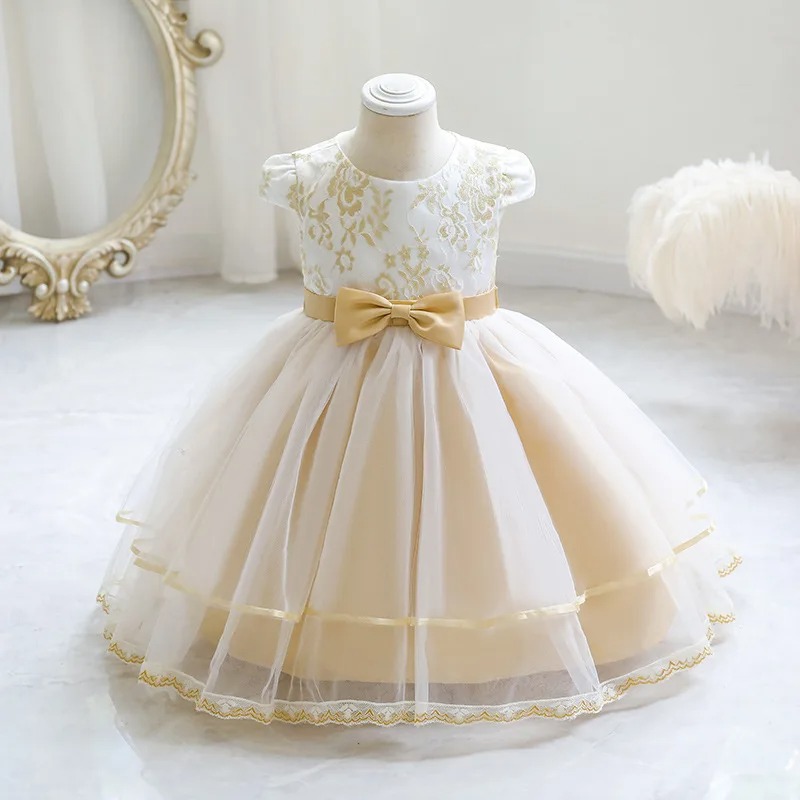
When choosing between tulle and chiffon for children’s clothing, fabric safety and comfort are vital factors that affect a child’s wellbeing and health. The right fabric choice helps prevent skin issues whilst allowing freedom of movement.
Breathable Fabrics for Children
I recommend selecting fabrics that allow proper air circulation. Breathable materials are essential for children’s comfort and health.
Chiffon offers better breathability than tulle, making it more suitable for warm weather garments. Its loose weave allows air to flow freely through the fabric.
Tulle can trap heat and moisture against the skin. For better comfort, I suggest layering tulle over breathable base fabrics like:
- Cotton
- Cotton-blend fabrics
- Natural linen
- Light muslin
Allergies and Skin Sensitivities
Children’s skin is particularly delicate and prone to irritation. Selecting safe materials helps prevent rashes and allergic reactions.
Synthetic tulle can cause itching and discomfort in children with sensitive skin. I’ve found that silk chiffon is gentler on delicate skin.
Common fabric-related skin issues include:
- Redness
- Itching
- Heat rash
- Contact dermatitis
If your child has sensitive skin, I recommend choosing cotton-lined garments when using either tulle or chiffon. This creates a protective barrier between the decorative fabric and their skin.
Fashion and Styling with Tulle and Chiffon
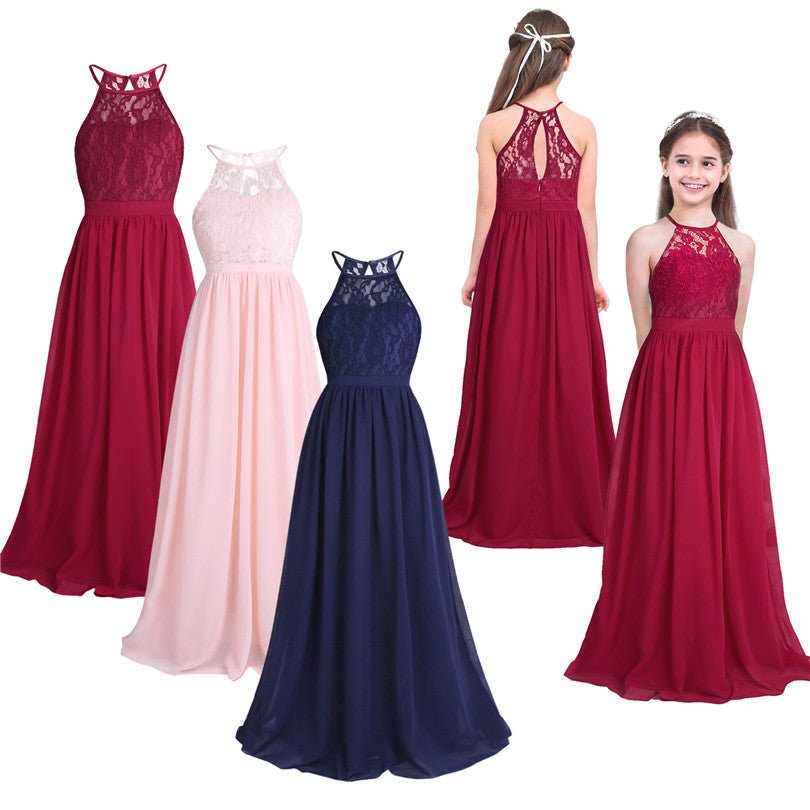
Both tulle and chiffon create magical looks for children’s clothing when used thoughtfully. I find these fabrics add whimsy and elegance to special occasion outfits through their unique characteristics and textures.
Occasions and Events
I recommend tulle for dance recitals and ballet costumes because it holds its shape beautifully and creates the perfect tutus. The fabric’s stiff nature helps it maintain that classic ballerina silhouette.
Chiffon works brilliantly for formal events like holiday parties and special dinners. Its flowing nature creates graceful movement that’s perfect for twirling and dancing.
For birthday parties, I suggest tulle overlays on party dresses. They create a magical, princess-like effect that makes young children feel special.
Layering and Combinations
I often layer tulle under chiffon to create depth and visual interest. The stiffer tulle provides structure while the chiffon adds a soft, flowing outer layer.
For formal dresses, I recommend using chiffon sleeves with a tulle skirt. This combination balances the ethereal quality of chiffon with tulle’s ability to hold shape.
Tulle works wonderfully as an accent when used in small amounts:
- As trim around hemlines
- In rosettes or flowers
- As subtle peek-a-boo panels
I find chiffon perfect for creating soft ruffles and gathered details that add movement without bulk.
Crafting and Sewing Techniques
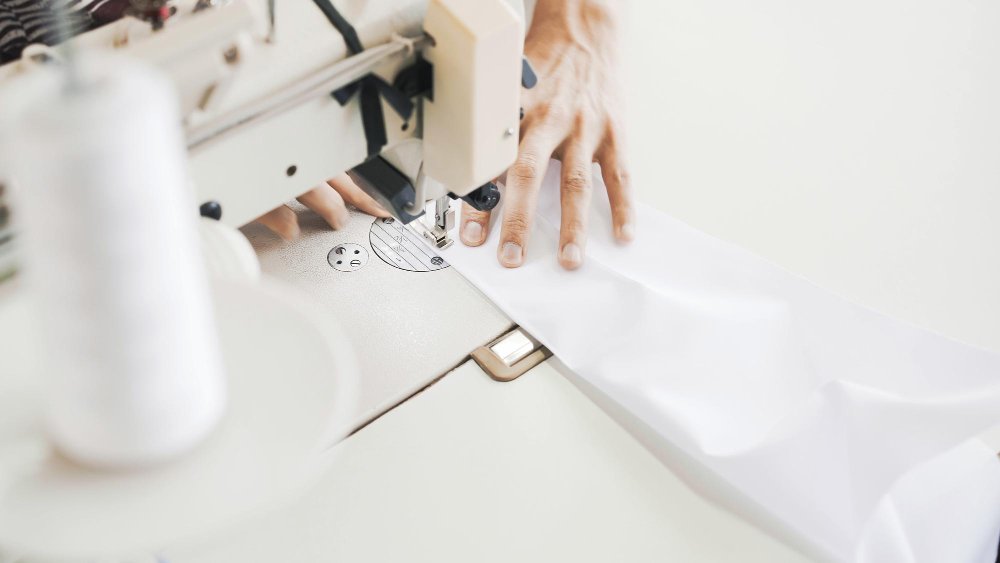
Working with tulle and chiffon requires specific techniques to achieve professional results. I’ve found that careful pattern selection and proper handling make all the difference when sewing with these delicate fabrics.
Patterns and Modifications
I recommend starting with simple patterns when using tulle or chiffon for children’s clothes. These lightweight, sheer materials need special consideration during pattern layout.
For tulle, I typically add extra width to skirt patterns to create fuller gathers. I’ve learned to reduce seam allowances to 1/4 inch to minimise bulk.
When working with chiffon, I always cut pattern pieces in single layers. This gives me more control and prevents shifting.
Pattern adjustments I recommend:
- Size up armholes by 1/4 inch
- Add 1-2 inches to hem allowances
- Double the width for gathered sections
Sewing with Sheer Fabrics
I use a fine needle (size 60/8 or 70/10) and lightweight thread when sewing both fabrics. Nylon chiffon requires special handling as it’s more slippery than tulle.
To prevent puckering, I place tissue paper under the fabric while sewing. This technique works brilliantly for both materials.
Essential tools I use:
- Sharp scissors dedicated to sheer fabrics
- Fine pins
- Walking foot attachment
- Fresh needles
I always test my stitches on scraps first. A stitch length of 1.5-2mm works best for most seams.
Care and Maintenance of Delicate Fabrics

Both tulle and chiffon need gentle handling to keep them looking their best. I recommend having a proper care routine to protect these fabrics from damage.
Washing and Storage
I always start by checking the fabric care label for specific instructions. For chiffon, I use cold water and mild detergent for hand washing. Tulle is a bit tougher and can handle gentle machine washing.
Never wring or twist these fabrics. I lay them flat to dry away from direct sunlight.
For storage, I hang delicate items on padded hangers. Folding can create permanent creases. I keep them in breathable garment bags to prevent snags and dust buildup.
Repair and Preservation
Small snags in tulle can be trimmed carefully with sharp scissors. For chiffon, I mend tiny holes with matching thread and a fine needle.
Regular gentle cleaning helps prevent permanent stains. I spot clean marks straight away using a soft cloth and plain water.
Steam works better than ironing for removing wrinkles. I hold the steamer 15cm away from the fabric and work in quick, light strokes.
I store special occasion clothes in acid-free tissue paper to prevent yellowing.
Environmental Impact and Sustainability
Both tulle and chiffon manufacturing processes impact the environment through water usage, chemical dyes, and energy consumption. Making smart choices about these fabrics can help reduce their environmental footprint.
Fabric Production Considerations
Proper waste management is crucial in fabric production. Traditional tulle and chiffon manufacturing uses significant amounts of water and chemicals in dyeing and finishing processes.
These fabrics often come from synthetic materials like nylon and polyester, which are petroleum-based products. The production creates greenhouse gases and microplastic pollution.
When I compare the two, chiffon typically requires more chemical treatments to achieve its soft, flowing texture. Tulle’s open mesh structure needs fewer finishing processes, making it slightly less resource-intensive to produce.
Choosing Eco-Friendly Options
I recommend looking for sustainably produced children’s clothing made with recycled materials. Many manufacturers now offer tulle and chiffon created from recycled polyester.
Natural and low-impact dyes are better choices for children’s clothing. They reduce harmful chemical exposure and environmental pollution.
Choose garments that:
- Use organic or recycled materials
- Feature eco-friendly dye processes
- Come from manufacturers with water conservation practices
- Have certifications for sustainable production
Common Fabric Comparisons and Questions
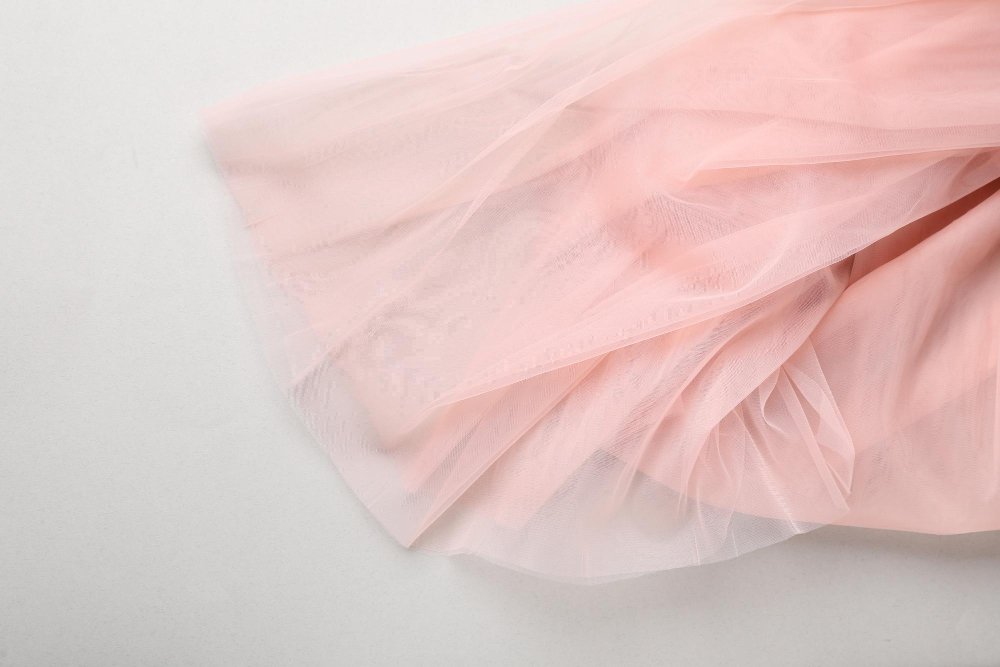
When selecting fabrics for children’s special occasion wear, many parents have questions about how tulle and chiffon compare to each other and similar materials. Based on my experience with children’s clothing design, I’ve compiled answers to frequently asked comparisons.
Is Tulle the Same as Chiffon?
No, tulle and chiffon are distinctly different fabrics. Tulle is a stiff, net-like material with a distinctive honeycomb or hexagonal structure that gives it rigidity and volume. Chiffon, by contrast, is a lightweight, plain-weave fabric with a slightly rough feel created by using S-twist and Z-twist crepe yarns.
The primary distinction lies in their structure – tulle is an open-weave netting, while chiffon is a sheer woven fabric. This fundamental difference affects how they drape, move, and feel against the skin.
According to textile specialist Rachel Riley, “The confusion often arises because both fabrics are sheer and used in special occasion wear, but their performance characteristics are quite different when used in children’s clothing.”
What Material is Close to Chiffon?
Several fabrics share similarities with chiffon but offer slightly different properties:
- Georgette: Slightly more textured and less transparent than chiffon, with a crepe-like feel
- Organza: Crisper and more structured than chiffon, but still lightweight and sheer
- Voile: More closely woven than chiffon, resulting in a smoother, less textured surface
- Crepe de Chine: Heavier than standard chiffon with a slightly pebbled texture
For children’s wear, georgette makes an excellent alternative when you want the flow of chiffon with a bit more opacity and durability. Textile consultant Emily Watson notes, “Georgette offers similar drape to chiffon but with improved durability for active children’s movement.”
Is Tulle a Summer Fabric?
Tulle can work well in summer clothing when used appropriately. Its open-mesh structure allows some air circulation, making it acceptable for warm weather when used as an overlay or decorative element.
However, multiple layers of tulle can trap heat, making fully tulle skirts potentially uncomfortable in very hot weather. According to children’s wear designer Samantha Green, “We often recommend single-layer tulle details for summer party dresses rather than full tulle skirts to keep children comfortable during warm-weather events.”
I find that tulle works brilliantly for summer garden parties and special occasions when:
- Used as a single layer overlay
- Combined with breathable cotton linings
- Incorporated as decorative elements rather than the main fabric
What is the Difference Between Chiffon and Crepe Tulle?
This comparison often causes confusion because the term “crepe tulle” blends characteristics of two distinct fabrics.
Standard tulle has a rigid, net-like structure with regular hexagonal holes. Crepe tulle (sometimes called “soft tulle”) incorporates crepe yarn during manufacturing, giving it a slightly softer drape while maintaining tulle’s basic structure.
Chiffon, meanwhile, is a lightweight plain-weave fabric made with crepe yarns that create its characteristic slight crinkle and matte appearance.
Fabric specialist Daniel Thompson explains, “Crepe tulle offers a middle ground between standard tulle’s structure and chiffon’s softness. It’s particularly suitable for children’s veils and overlays where you want volume without the stiffness of regular tulle.”
Which is Better, Tulle or Chiffon?
Neither fabric is objectively “better” – the right choice depends entirely on the garment’s purpose and the desired aesthetic. Based on my experience with children’s special occasion wear:
Choose tulle when you need:
- Structure and volume (ballet tutus, princess dresses)
- A fabric that holds its shape well
- Crisp, defined edges
- A more dramatic, standout effect
- Resistance to wrinkling
Choose chiffon when you prefer:
- Soft, flowing movement
- Gentle drape against the body
- A lightweight, airy feel
- Comfort for extended wear
- A more subtle, elegant appearance
Children’s boutique owner Eliza Hampton observes, “For parties where children will be active for hours, chiffon often proves more comfortable. For photography sessions or shorter events, tulle creates that perfect princess silhouette parents often desire.”
Is Tulle Better Than Chiffon?
For children’s wear, each fabric has distinct advantages depending on the specific application:
Tulle advantages:
- Maintains shape throughout wear
- Resists crushing when packed
- Creates dramatic volume
- Offers more structured embellishment opportunities
- Generally more durable against snagging
Chiffon advantages:
- Provides superior comfort against sensitive skin
- Drapes more gracefully
- Creates fluid movement when the child moves
- Often feels lighter weight
- Takes fine details like pleating and gathering beautifully
As children’s fabric specialist William Marshall notes, “For everyday comfort, chiffon generally wins over tulle. But for creating that perfect photo-worthy special occasion look, tulle’s structure is unmatched.”
Expert Insights on Fabric Selection
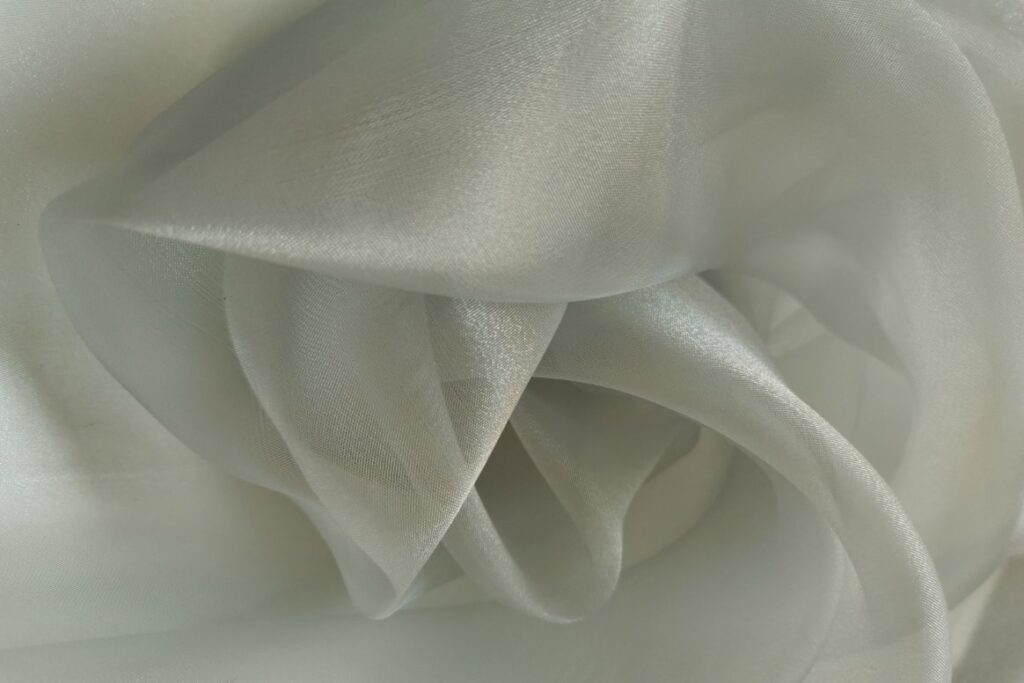
“When designing for children’s celebrations, fabric choice directly impacts how comfortable and confident they feel,” explains Emma Thornton, children’s fashion designer at Little Darlings London. “The weight and movement of the fabric should complement the occasion and the child’s personality.”
British textile expert James Hamilton adds, “Both tulle and chiffon have strong heritage in British children’s formal wear. Historically, silk tulle dominated Victorian children’s celebration dress, while chiffon gained popularity during the Edwardian period for its elegant fluidity.”
When working with these delicate fabrics, British children’s clothing standards (BS 7907) provide important safety guidelines. The standard recommends avoiding embellishments that could cause irritation and ensuring all edges are properly finished to prevent skin irritation.
Regional Fabric Considerations
The variable climate presents unique considerations when choosing between these fabrics. According to milliner and fabric specialist Catherine Delaney, “Our unpredictable weather means versatility is essential in children’s special occasion wear. Layering options work particularly well – a chiffon dress with a detachable tulle overlay gives options for temperature changes.”
For spring weddings and summer garden parties, lightweight silk tulle provides structure without excessive warmth. For autumn and winter celebrations, polyester chiffon layered over warmer materials offers both elegance and practicality.
Practical Selection Guide for Parents
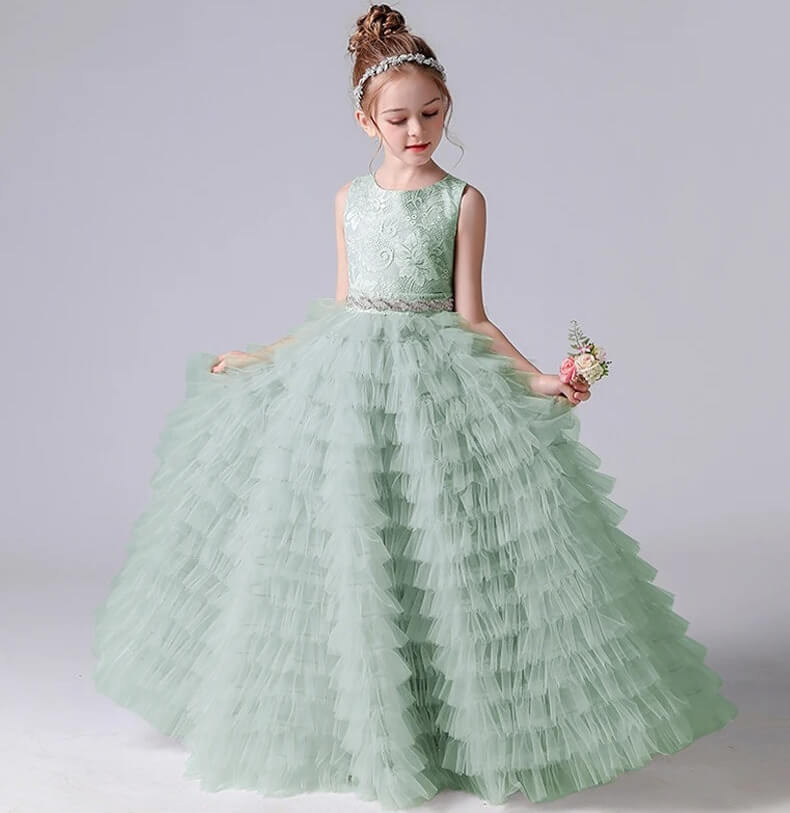
When helping parents choose between tulle and chiffon for their children’s special occasion wear, I consider several practical factors:
For the active child: Chiffon typically offers better freedom of movement and comfort during extended wear. Look for polyester chiffon with a small percentage of stretch for maximum comfort.
For the special photo opportunity: Tulle creates that perfect “princess moment” with its structured volume. Multiple layers of soft tulle create a photogenic silhouette that holds its shape beautifully.
For warm weather events: Single-layer chiffon with appropriate lining provides the best breathability. If tulle is preferred, choose a design with minimal layers and ensure proper air circulation.
For sensitive skin: Silk chiffon or cotton-blend tulle with full cotton lining minimizes irritation. Always check for properly finished seams to prevent scratching.
As children’s boutique owner Margaret Rowley observes, “The most successful special occasion outfits combine practicality with beauty. A comfortable child is a happy child, regardless of how beautiful the fabric might be.”
Conclusion
Selecting between tulle and chiffon for children’s special occasion wear ultimately comes down to balancing practical considerations with aesthetic preferences. Throughout this guide, we’ve explored the unique characteristics of both fabrics and how they perform in various contexts for children’s clothing.
Tulle offers remarkable structure and volume, creating dramatic silhouettes perfect for standout moments and photography. Its durability and ability to maintain shape make it ideal for less frequent, special celebrations where visual impact matters most. The fabric excels in creating that magical princess effect that many children adore.
Chiffon provides superior comfort, graceful movement and a gentle touch against sensitive skin. Its flowing nature creates elegant drape and beauty in motion, particularly suited to events where children need to remain comfortable for extended periods. For summer celebrations and active wear, chiffon’s breathability gives it a distinct advantage.
Final Recommendations
For the perfect balance in children’s special occasion wear, consider these final takeaways:
- Combined approaches often work best: A chiffon bodice with tulle skirt overlay offers both comfort and drama.
- Always prioritize proper lining: Neither fabric should sit directly against sensitive skin for extended periods.
- Consider the complete experience: The most beautiful outfit becomes worthless if a child is uncomfortable during their special moment.
- Adapt to the season: Lighter applications of both fabrics for summer, fuller and layered approaches for cooler weather.
- Look beyond the occasion: Consider how the garment might be repurposed or modified for future wear.
- Quality matters more than quantity: A single layer of premium silk tulle often creates more beauty than multiple layers of inexpensive polyester tulle.
As specialist children’s tailor William Hargreaves notes, “The perfect children’s special occasion outfit should be remembered for how it made the child feel, not just how it made them look. Both tulle and chiffon, when chosen thoughtfully, can create those perfect childhood memories.”
By understanding the distinct qualities of tulle and chiffon and applying this knowledge to your specific needs, you can make confident choices that enhance those special moments in your child’s life with both beauty and comfort.

